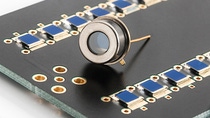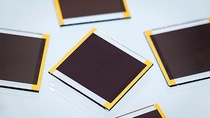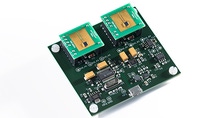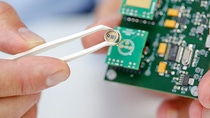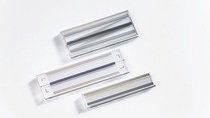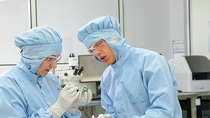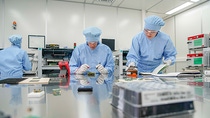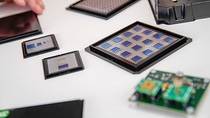Innovation
The miniaturized infrared detector HertzstückTM
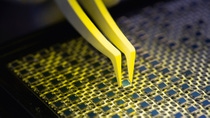
Can you impress today’s customers with an 80-year-old technology? This is what the trinamiX development team achieved with the infrared detector Hertzstück™.
With Heart and Mind
“We cannot fulfill your product requirements.” This was the response of all suppliers when trinamiX wanted to order certain detectors in the form of a small chip and in high numbers. A disappointing message. To manufacture an optical sensor system for distance measurement, the team working with Sebastian Valouch and Wilfried Hermes were searching for something not yet existing in this form: a wafer-thin infrared detectors made of lead salt. The models previously available on the market were very sensitive to water and oxygen, which is why they are protected by a sort of tin can: five millimeters thick – a true waste of space in the miniaturized world of microchips.
At this point the story could have already ended. However, the will and pragmatism of the BASF subsidiary persisted. Working in a team, they pooled electronics knowledge and chemical expertise and, in April 2015, they started developing their own detectors with ultrathin encapsulation.
From the start, chemical and process development closely coordinated their activities, and only those ideas were implemented that would also work in series production. At the beginning, there was considerable discussion in the team – about 20 process steps had to be coordinated with one another. But, ultimately, the production could be moved almost directly from the lab to mass production
We knew exactly what we wanted and not getting it was so frustrating. We just had to try it ourselves.”
October 2016: We developed the detector in only 18 months and established our own production. The properties of our detector were so good that we wanted to offer them to external customers as well.”
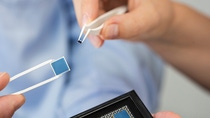
Hertzstück™? The name is telling
The detector is the heart of every measurement device. The less light needed to obtain good results, the higher the performance, the so-called “detectivity”. This value is particularly good for Hertzstück™ detectors at room temperature. The detectors come to life in the in-house production in Ludwigshafen. From the chemical deposition to the encapsulation – trinamiX produces the detector in the chemical lab and clean room in mass production according to the intended use and in different sizes.
The special potential offered by the inexpensive and high-performance detectors can be found in applications involving miniaturized electrical engineering: Without the oversized casing, the chip could be integrated in corresponding measurement devices in smartphones – and in the future enable consumers to scan food for contamination as well as for water and sugar content. In October 2018 trinamiX presented a prototype of a portable mini spectrometer. Many more measurements and applications are conceivable.
